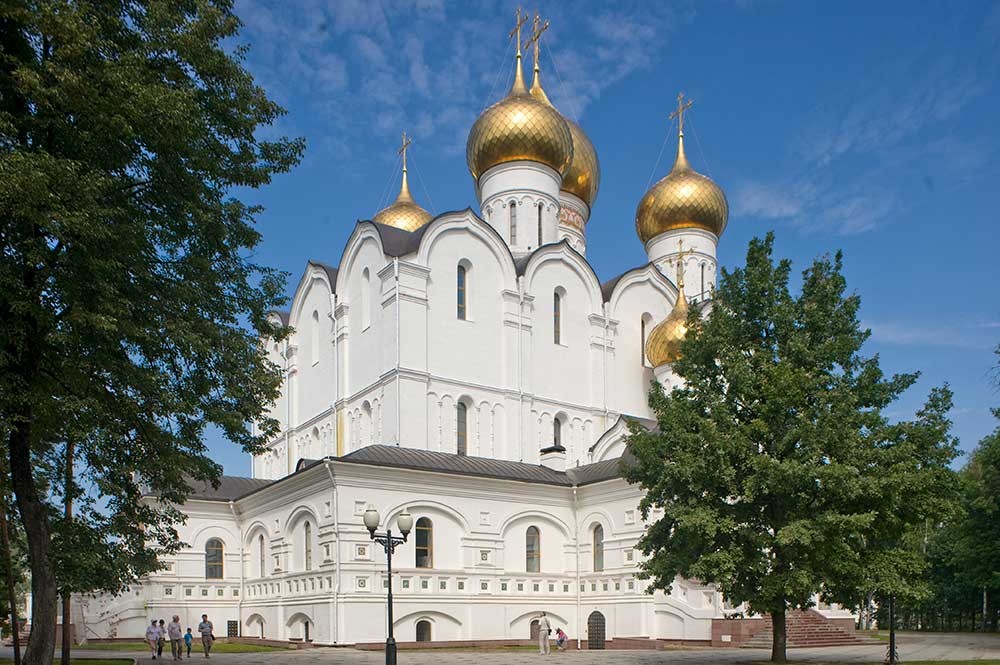
Yaroslavl. Cathedral of the Dormition of the Virgin. Southwest view. August 14, 2017.
William Brumfield
At the beginning of the 20th century, the Russian chemist and photographer Sergei Prokudin-Gorsky devised a complex process for vivid, detailed color photography. His vision of photography as a form of education and enlightenment was demonstrated with special clarity through his photographs of architectural monuments in the historic sites throughout the Russian heartland.
Logistical support for his project came from the Ministry of Transportation, which facilitated his photography on Russia’s waterways and expanding rail network. His trips along the upper and middle parts of the Volga River proved especially productive. One of the richest historic towns on the river is Yaroslavl, located 150 miles northeast of Moscow.
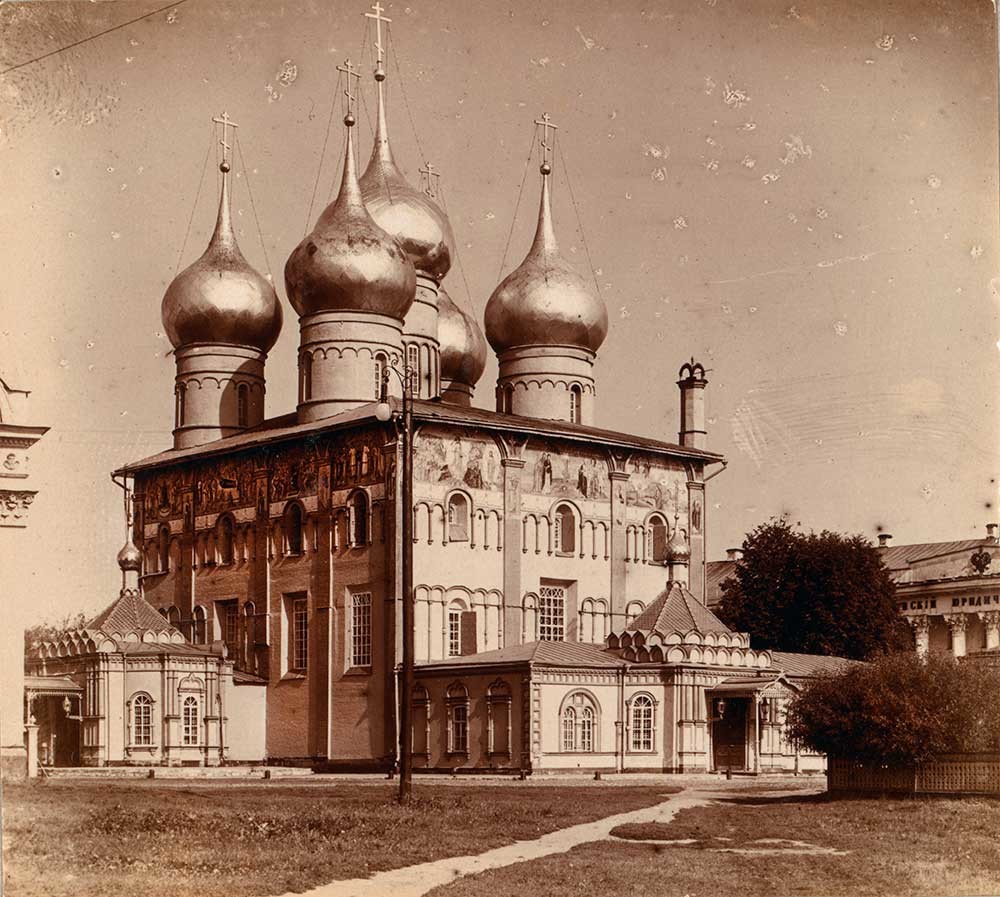
Yaroslavl. Cathedral of the Dormition of the Virgin. Northwest view. Summer 1910.
Sergei Prokudin-Gorsky
Yaroslavl is now a large regional center (population around 600,000) with an extensive industrial base anchored by petrochemicals. But fortunately, its historic monuments have been preserved. The town’s beauty is enhanced by its location on a tree-lined embankment overlooking the Volga.
The central ornament of this boulevard was the town’s main cathedral, dedicated to the Dormition of the Virgin. The fate of this structure reflects Russia’s turbulent history over the past century to a degree matched by few others.
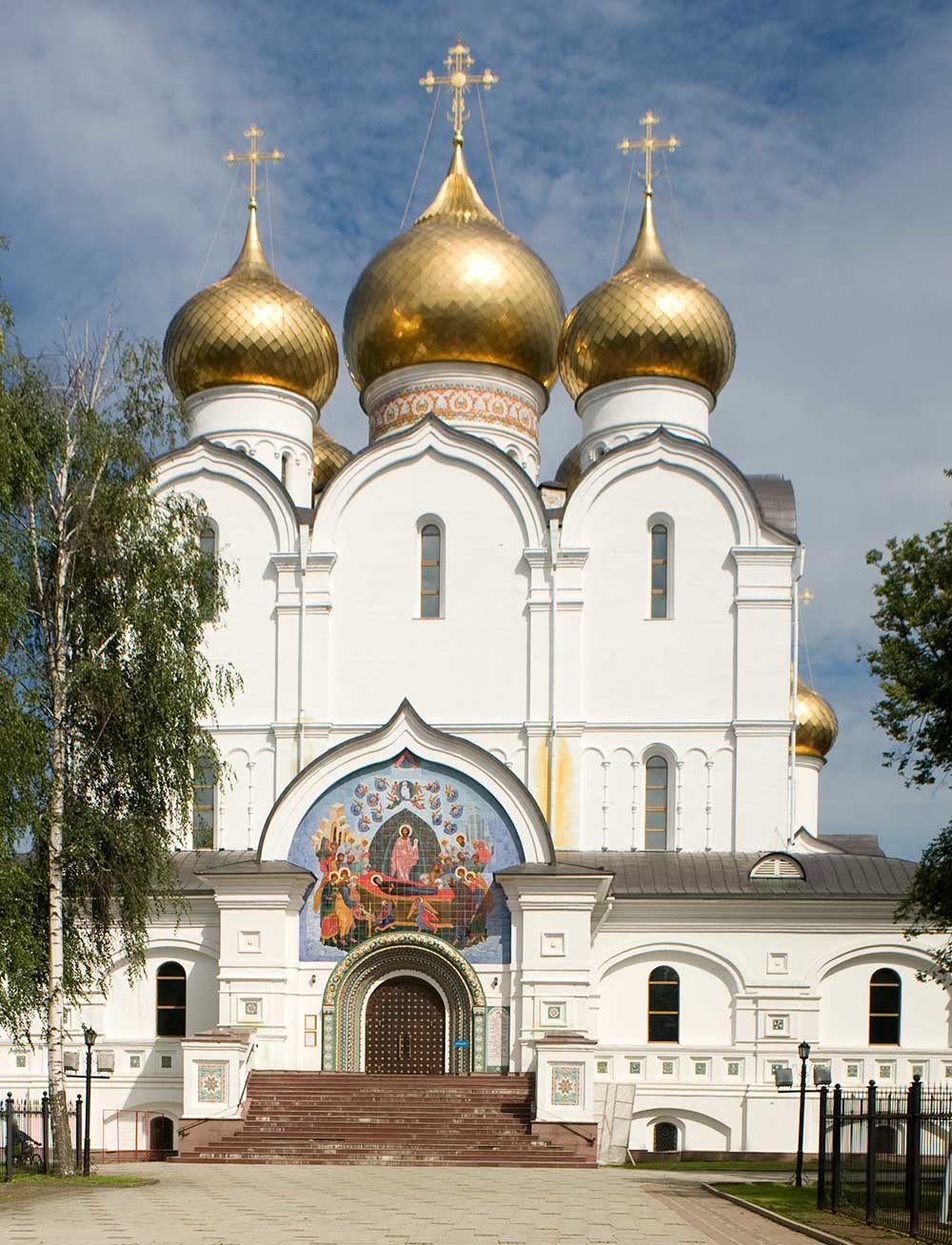
Cathedral of the Dormition. West view. August 14, 2017.
William Brumfield
Among the monuments Prokudin-Gorsky photographed in Yaroslavl in 1910, the Dormition Cathedral occupies an important place. Unfortunately, the original glass negatives of the photographs are missing from the Library of Congress collection. Nonetheless, the monochrome images from his album of contact prints provide exceptionally valuable information about the pre-revolutionary state of the cathedral.
A cultural and economic hub
Yaroslavl was founded in the early 11th century by the Kievan grand prince Yaroslav the Wise--one of the greatest rulers of medieval Rus. By the early 13th century, the settlement had monasteries with masonry churches. In 1238, it was sacked by the Mongols during their conquest of central Russia. Although recovery from Mongol dominance was slow, union with Muscovy in the 15th century integrated the town into a larger political and economic structure.
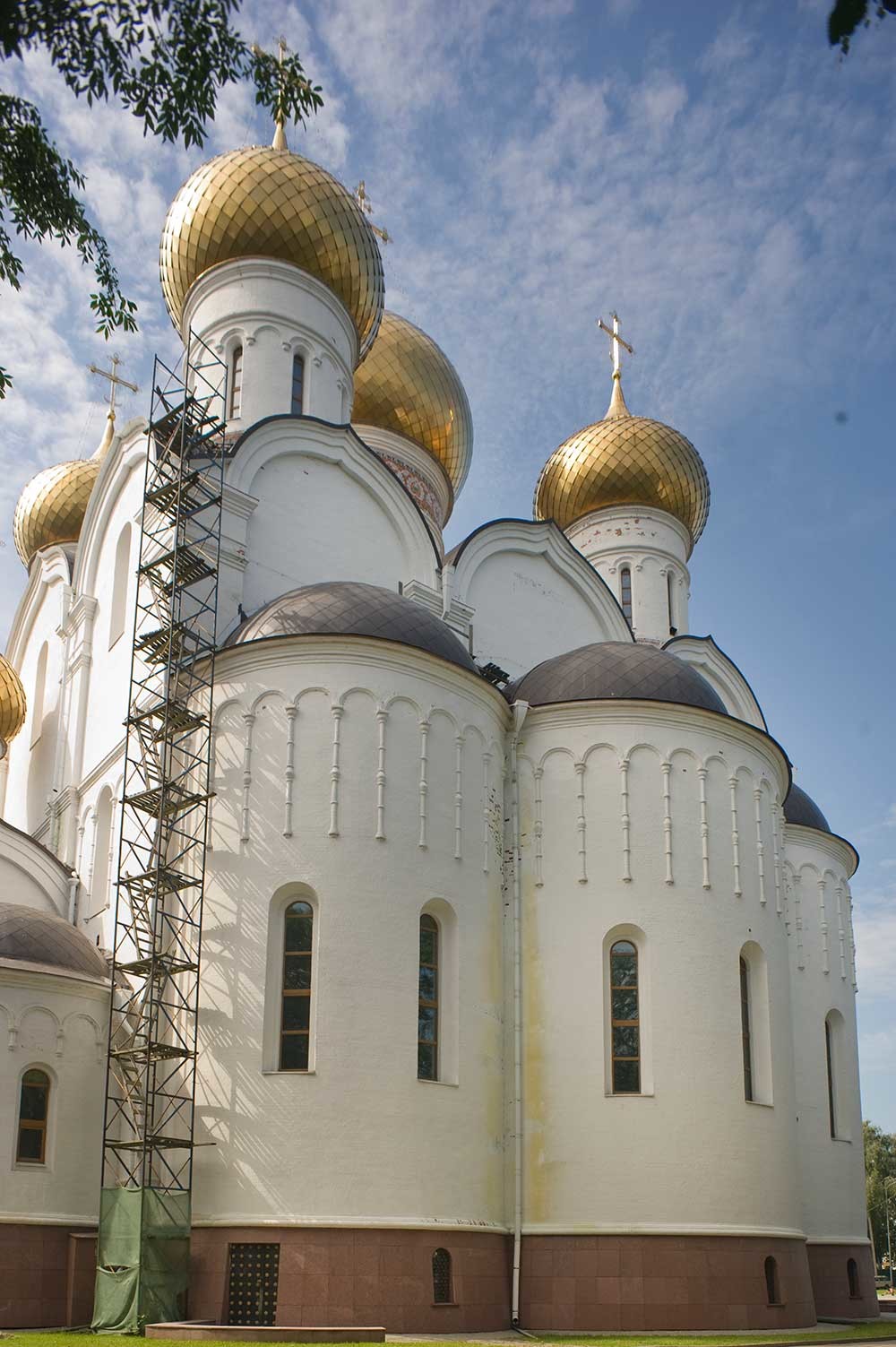
Cathedral of the Dormition. Apse, southeast view. August 14, 2017.
William Brumfield
Yaroslavl’s location allowed it to serve as a center not only for trade within the vast Volga River basin, but also for exploitation of the forested expanses of the Russian north. In the latter part of the 16th century, Ivan the Terrible established a port at the Arkhangel Monastery on the Northern Dvina River near the White Sea and thus opened Moscow for commerce with western Europe.
This enhanced Yaroslavl’s strategic position within a mercantile network that stretched from the White Sea to Siberia and the Orient. With new trading possibilities, Yaroslavl attracted colonies of Russian and foreign merchants (English, Dutch, and German).
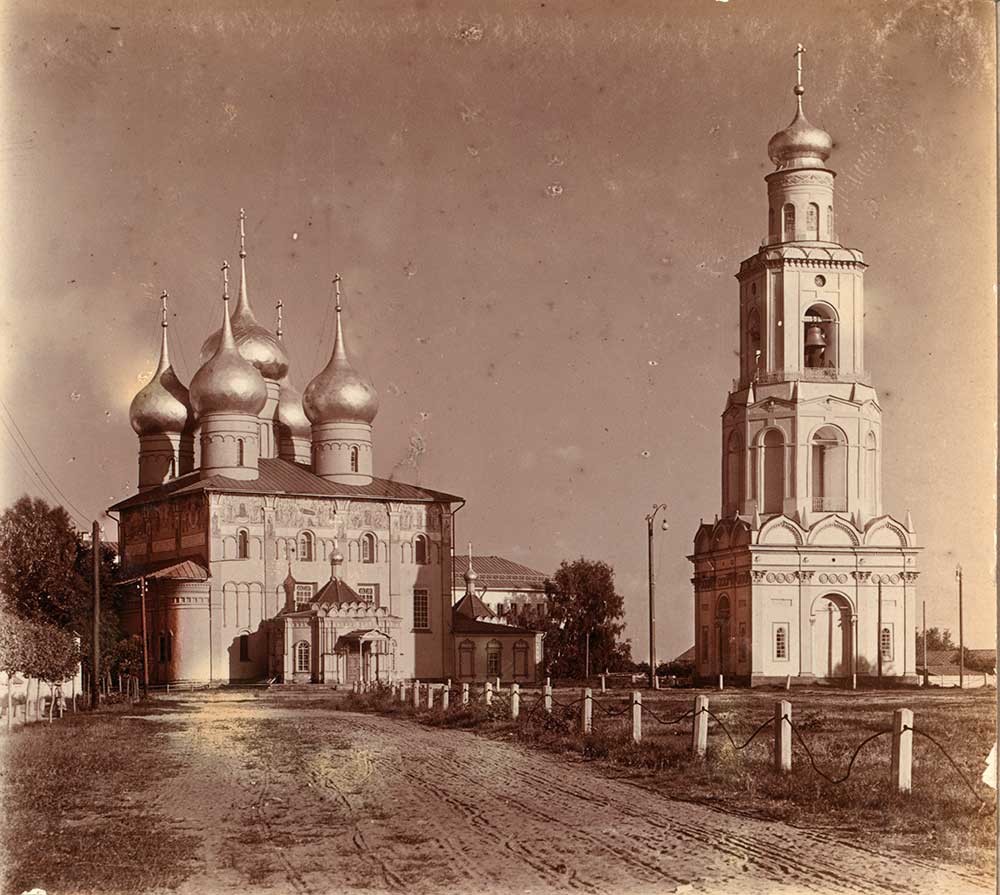
Cathedral of the Dormition, north view. Right: Cathedral bell tower. Summer 1910.
Sergei Prokudin-Gorsky
Although spared the worst of the disorder inflicted on Russia in the latter part of Ivan the Terrible's reign, Yaroslavl’s role as a commercial center declined during the interregnum following the death of Boris Godunov in 1605. Known as the Time of Troubles, this period saw much of the country plundered in the course of political and social chaos. Yaroslavl again eluded the worst of the cataclysm, and in 1612 the city served as a center for rallying national resistance against a Polish occupying force in Moscow.
A return of wealth
The active participation of Yaroslavl's merchants in this campaign brought them extensive trading privileges from the government of the new ruler, Mikhail Fyodorovich, first tsar of the Romanov dynasty. Consequently, during the 17th century the city not only accumulated the wealth necessary to build elaborately decorated churches, but also established connections with cultural centers to the west.
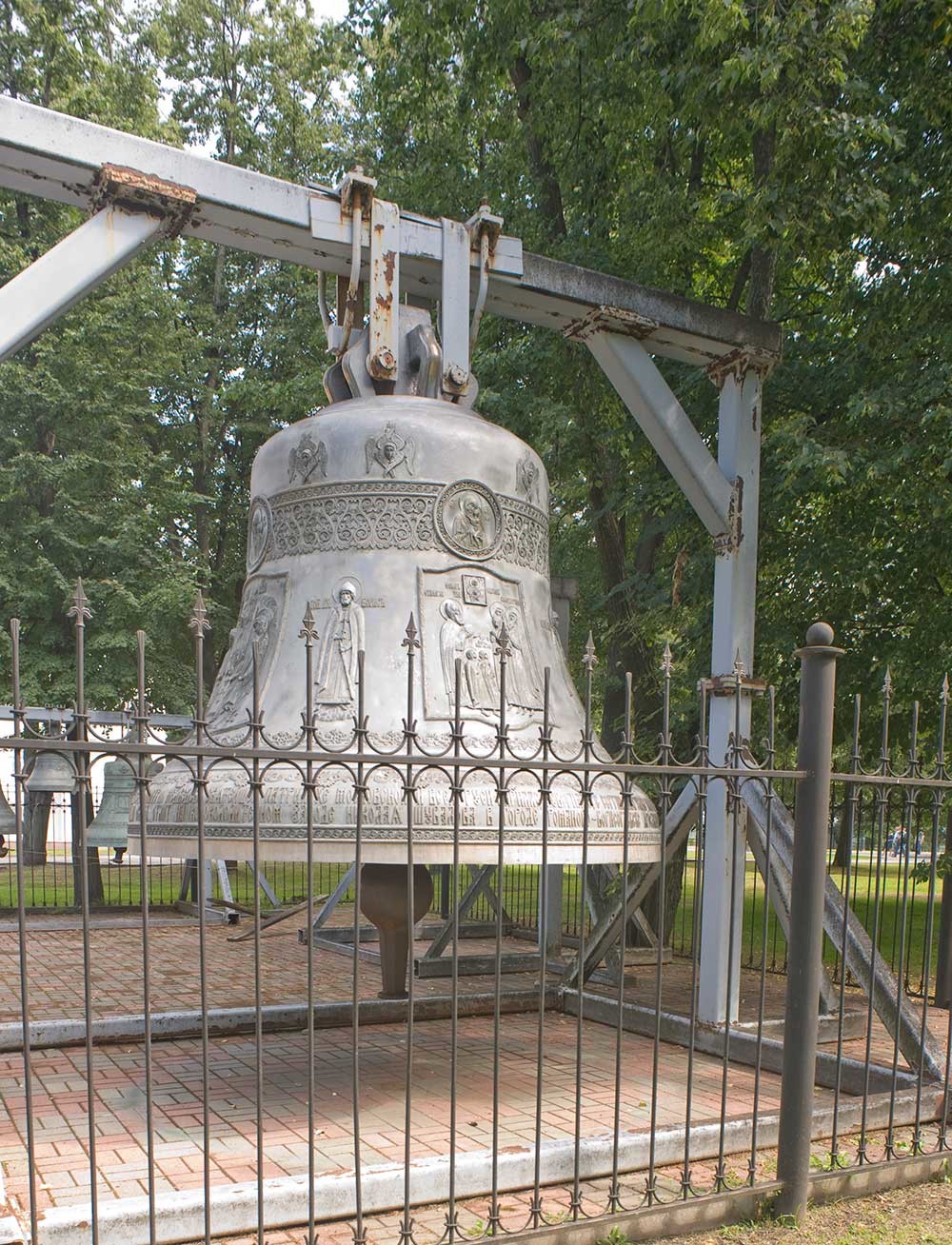
Cathedral of the Dormition. Temporary bell mount. August 14, 2017.
William Brumfield
Only Moscow could rival Yaroslavl in its concentration of new churches, sponsored by a combination of wealthy merchants, city districts, and trade associations. In Yaroslavl during the 17th century, 44 masonry churches - most of considerable size - were erected within the area’s 35 parishes.
The largest among the shrines was the town’s main cathedral, dedicated to the Dormition of the Virgin and originally built of brick in the early 13th century during the reign of Prince Konstatin Vsevolodovich of Rostov.
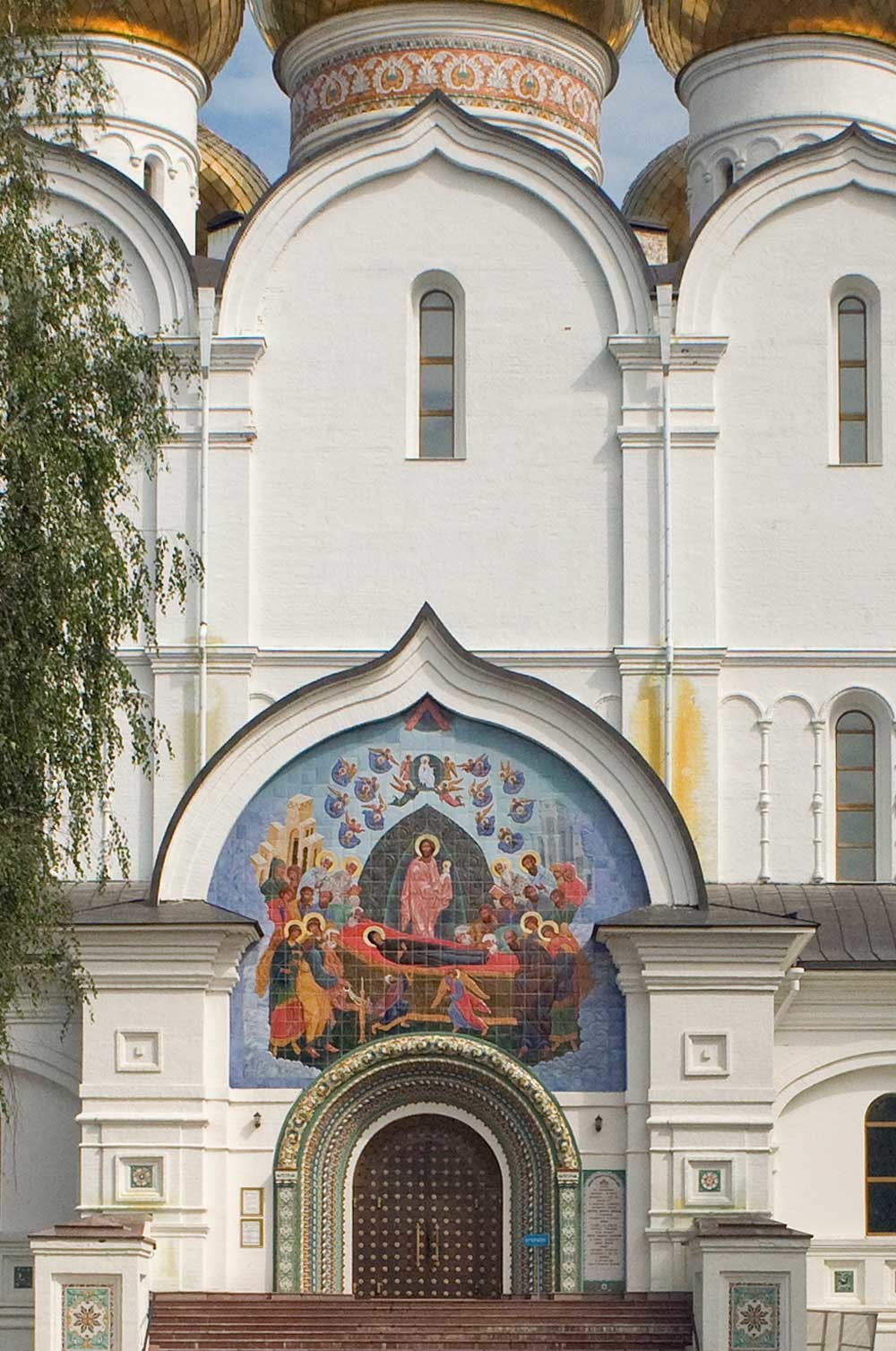
Cathedral of the Dormition. West facade with main portal & painting of the Dormition. August 14, 2017.
William Brumfield
That structure was rebuilt multiple times before the mid 17th century, when Tsar Alexei Mikhailovich commanded that it be rebuilt on a different site overlooking the Volga. The cathedral that Prokudin‑Gorsky photographed was erected in the 1660s, with numerous modifications made over the next two centuries.
In its design, the structure resembled the Dormition Cathedral in the Moscow Kremlin (1470s), particularly as reiterated in other large cathedrals during the 16th century. The facades are accented with blind arcading and culminate in semi-ciruclar gables known as zakomary. These gables were partially obscured by a level roofline, perhaps a later modification. The structure was crowned by five large domes.
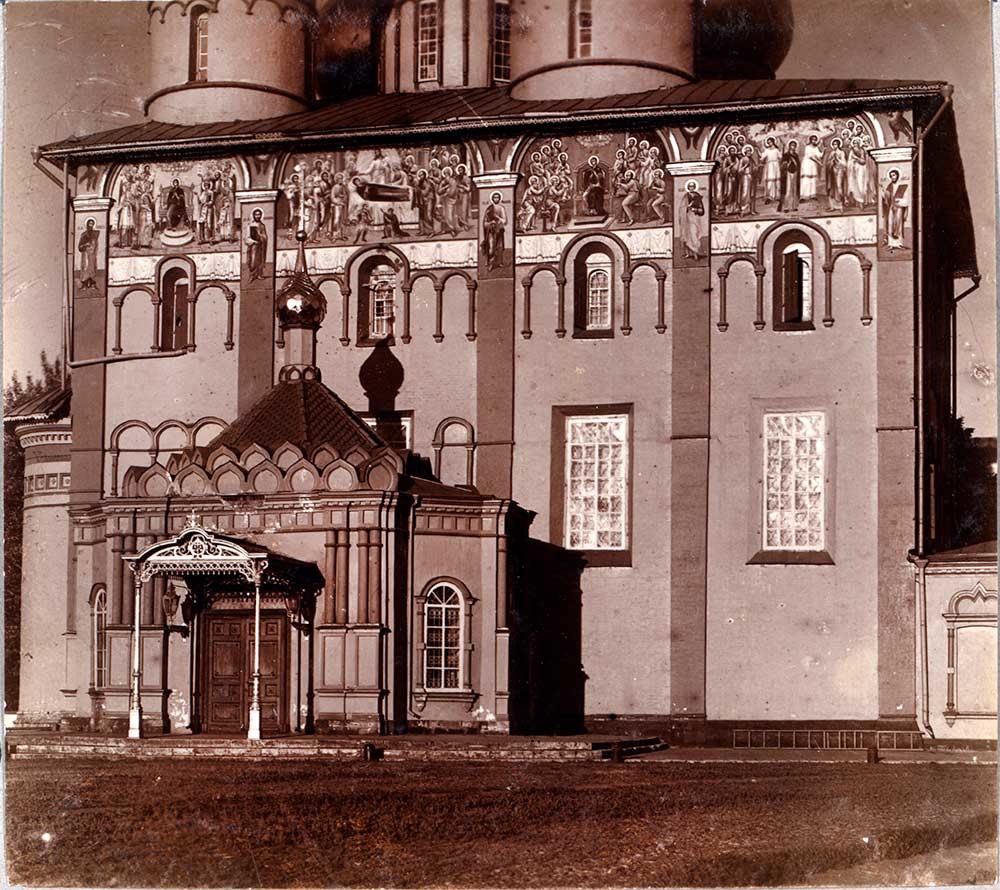
Cathedral of the Dormition. North facade with wall paintings. Summer 1910.
Sergei Prokudin-Gorsky
The interior also bore a resemblance to the main Moscow cathedral, with a similar plan and walls covered with frescoes painted in 1671-74. A distinctive local feature was the addition of decorative porches to the main facades, visible in Prokudin-Gorsky’s views.
An adjacent four-tiered bell tower, visible in one of Prokudin-Gorsky’s photographs, was completed in 1836 to a design in the Russo-Byzantine style by the architect Avraam Melnikov. Also in the 19th century, exterior frescoes on the upper parts of the facades were repainted in an academic style visible in Prokudin‑Gorsky’s closer views. In light of the cathedral’s subsequent history, it is regrettable that his three-color separation negatives are missing. They would have shown the colors of artwork that have been lost forever.
Destruction and rebirth
During a two-week Yaroslavl uprising against the Bolsheviks in July 1918, the Dormition Cathedral was heavily shelled. Partially repaired in the early 1920s, it was closed in 1929 and all later additions were removed from the core 17th-century structure—perhaps a prelude to museification. Instead, the cathedral was demolished at the height of the Stalinist repressions in 1937 and the site converted to a park.
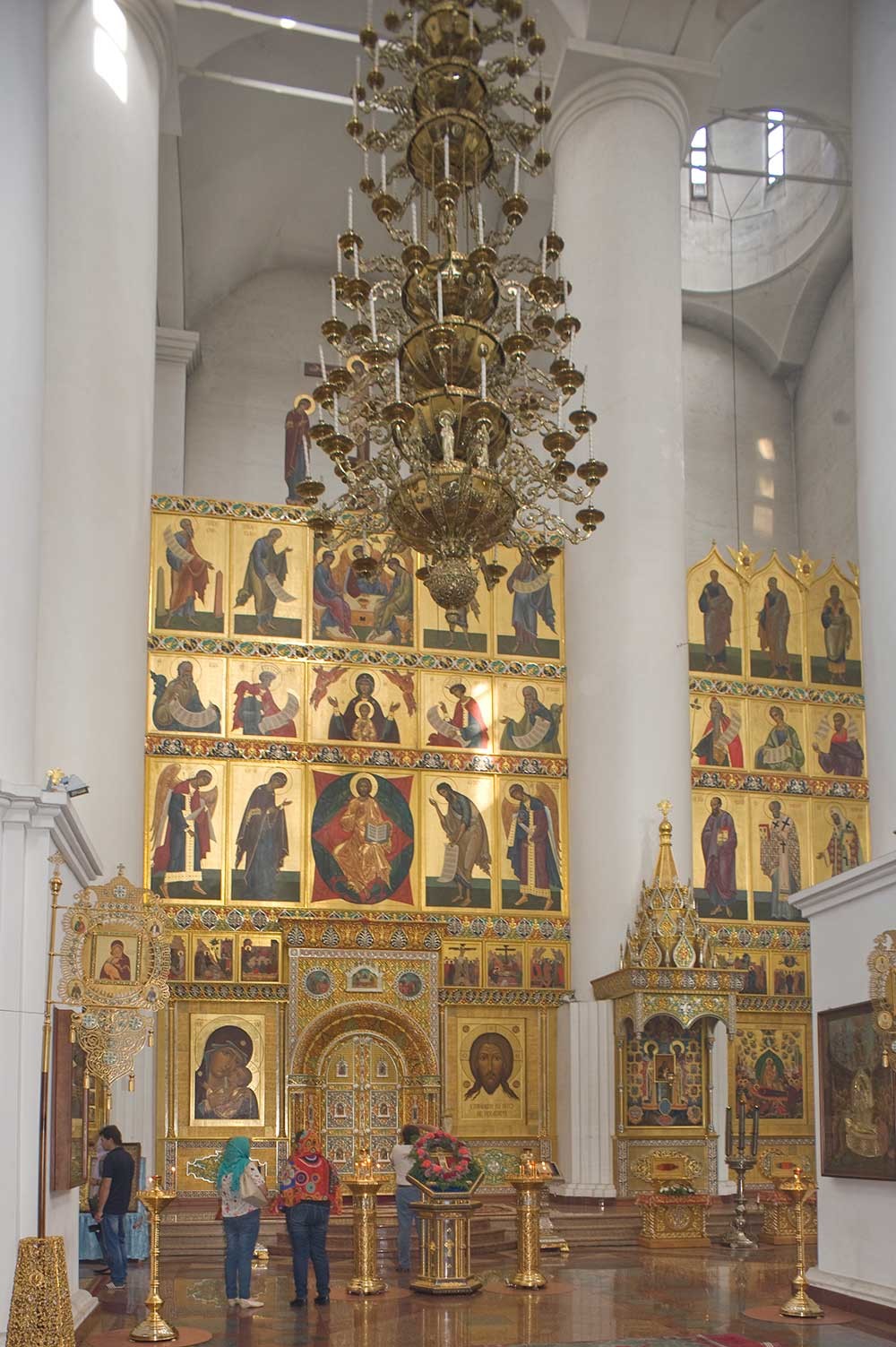
Cathedral of the Dormition. Interior, view east toward icon screen. August 14, 2017.
William Brumfield
In 2004 a campaign to rebuild the shrine was launched with major financial support from a Moscow entrepreneur. Designed by the Moscow architect Alexei Denisov, the new cathedral was built in 2006-12. The outline of its central form resembles the Moscow Dormition Cathedral, with blind arcading on the facades and unobstructed zakomara gables visible in my 2017 photographs.
The new structure lacks the highly ornamented porches, although it has chapels attached to the north and south facades. Some preservationists objected to the larger scale of the new structure and the lack of particular stylistic features of the 17th-century cathedral.
My photographs from 2017 show a different, more restrained approach to the facade paintings, the largest of which, over the main portal on the west façade, portrays the Dormition of Mary, Mother of God. The interior, under the general design of Andrei Fekhner, has a large iconostasis with icons by Yaroslavl icon painter Yulia Belova. A free-standing bell tower is also planned, but at present there is a simple bell mount seen in my photograph.
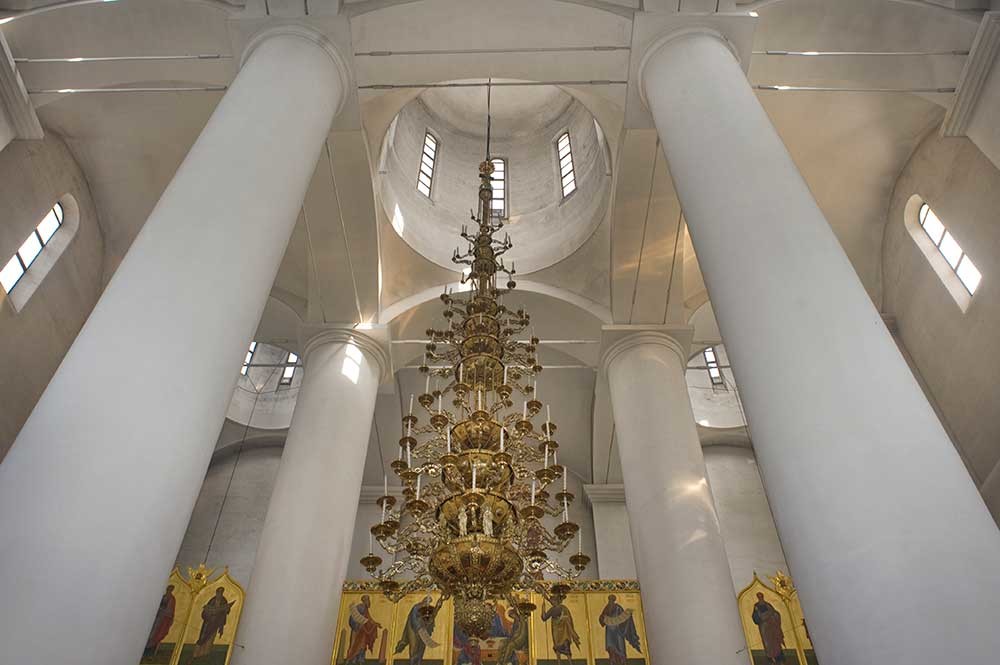
Cathedral of the Dormition. Interior, view upward toward central crossing & main dome. August 14, 2017.
William Brumfield
In the early 20th century the Russian photographer Sergei Prokudin-Gorsky devised a complex process for color photography. Between 1903 and 1916 he traveled through the Russian Empire and took over 2,000 photographs with the process, which involved three exposures on a glass plate. In August 1918, he left Russia and ultimately resettled in France with a large part of his collection of glass negatives. After his death in Paris in 1944, his heirs sold the collection to the Library of Congress. In the early 21st century the Library digitized the Prokudin-Gorsky Collection and made it freely available to the global public. A number of Russian websites now have versions of the collection. In 1986 the architectural historian and photographer William Brumfield organized the first exhibit of Prokudin-Gorsky photographs at the Library of Congress. Over a period of work in Russia beginning in 1970, Brumfield has photographed most of the sites visited by Prokudin-Gorsky. This series of articles juxtaposes Prokudin-Gorsky’s views of architectural monuments with photographs taken by Brumfield decades later.
If using any of Russia Beyond's content, partly or in full, always provide an active hyperlink to the original material.









